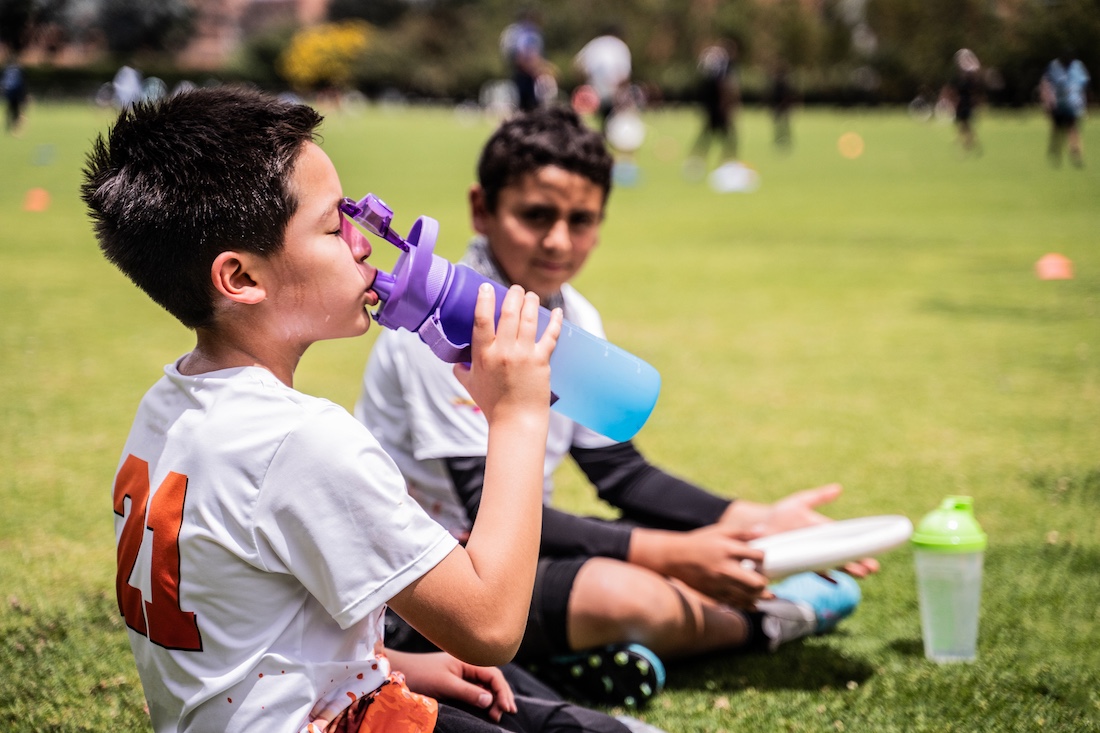Heat-related illnesses among children on the rise
UTSW study reveals 170% increase over 12 years in emergency department visits among children exposed to excessive heat

DALLAS – July 07, 2025 – Higher summer temperatures are resulting in more children seeking emergency care for heat-related illnesses, with nearly 1 in 5 needing hospitalization, according to new research from UT Southwestern Medical Center published in Academic Pediatrics.

A review of emergency department (ED) visits at Children’s Health campuses in Dallas and Plano during the months of May through September, 2012–2023, found that heat-related illness encounters, as a proportion of total ED cases, increased 170%, with the higher level of visits correlating with hotter weather.
“As extreme summer temperatures become more frequent, we’re seeing a rise in heat-related illnesses among children,” said study leader Andrew Yu, M.D., a pediatric hospitalist at Children’s Health and Assistant Professor of Pediatrics and Director of the Pediatric Residency Program at UT Southwestern.
Heat-related illnesses range from mild heat cramps and fainting to heat stroke, heat exhaustion, and rhabdomyolysis – a severe and potentially fatal condition caused by prolonged exertion in extreme heat that leads to muscle breakdown.
While most prior research has focused on adults or high school athletes, little is known about how heat affects the broader pediatric population. Children are more vulnerable due to physiological and behavioral factors. They have a larger surface area relative to body mass, have lower sweat production, and often have difficulty determining when it’s time to rest or hydrate.

“This research strengthens the evidence linking extreme heat to pediatric health risks, helping define the burden and inform future prevention strategies,” said Taylor Merritt, M.D., a third-year pediatric resident at UT Southwestern and Children’s Health and the study’s lead author. “By identifying trends and demographic patterns, the study raises awareness among clinicians and caregivers to better recognize and protect children at increased risk.”
To evaluate the risk, researchers reviewed more than 2 million ED visits. More than 500 of those visits were linked to excessive heat, the effects of heat and light, or rhabdomyolysis. Because rhabdomyolysis differs significantly from other heat-related conditions, researchers assessed it separately.
Among other findings:
- Children living in low-opportunity neighborhoods — those with less access to quality schools, parks and playgrounds, clean air, access to healthy food, health care, and safe housing — were disproportionately affected.
- Children with rhabdomyolysis were admitted to the hospital 63% of the time.
- Children with other heat-related illnesses were discharged from the ED in 96% of the cases.
- Compared with rhabdomyolysis patients, children with other diagnoses were more likely to be under age 12, Hispanic, on government insurance, or from very low-opportunity neighborhoods.
Researchers said additional study is needed to understand how neighborhood factors such as tree canopy and urban heat islands could affect risk.
UTSW Medical School student Sanjna Bhatia contributed to this study.
About UT Southwestern Medical Center
UT Southwestern, one of the nation’s premier academic medical centers, integrates pioneering biomedical research with exceptional clinical care and education. The institution’s faculty members have received six Nobel Prizes and include 25 members of the National Academy of Sciences, 24 members of the National Academy of Medicine, and 14 Howard Hughes Medical Institute Investigators. The full-time faculty of more than 3,200 is responsible for groundbreaking medical advances and is committed to translating science-driven research quickly to new clinical treatments. UT Southwestern physicians provide care in more than 80 specialties to more than 140,000 hospitalized patients, more than 360,000 emergency room cases, and oversee nearly 5.1 million outpatient visits a year.
